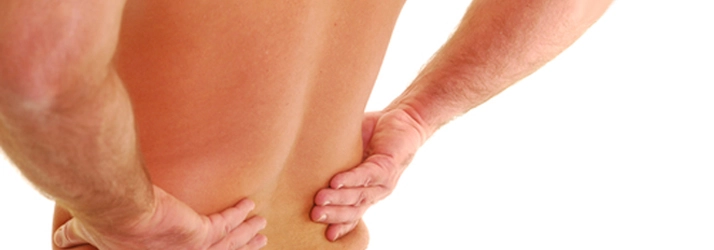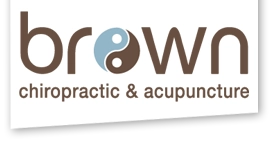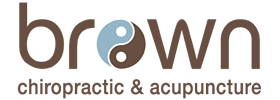Do you have Low Back Pain in Gilbert AZ?

Low back pain is the most common condition we help in our Gilbert AZ chiropractic office, and we improve or resolve over 90% of those conditions. Low back pain is challenging to treat because it can come from many different sources. This page will discuss some of the major sources of low back pain and how we treat them in our office. We begin with the most common cause of low back pain: the sacroiliac joint.
Chiropractic and Acupuncture can be part of an effective treatment program for all kinds of low back pain. Dr. Brown combines Chiropractic and Acupuncture with Physical Medicine for the fastest results.
Sacroiliac Joint Problems in Gilbert AZ
Sacro” means “sacrum” or “tailbone”, and “iliac” means “ilium” or “hip” bone. So the sacroiliac joint (or SI joint) is where the sacrum and the ilium come together and form a large joint. The two large, bony bumps you can feel on your low back around your waistline mark the location of the SI joint. It is a large joint which bears a lot of mechanical stress and is the number one cause of low back pain we treat in our office.
An inflamed sacroiliac joint can cause severe lower back pain, and numbness and tingling down the leg at times. The SI joint can be injured with lifting, extended sitting and driving, sleeping wrong or any other activity which puts incorrect stress on the lower back. Treatment with Chiropractic Manipulation, Acupuncture, muscle stimulation, ice and anti-inflammatories will resolve the majority of SI joint problems.
Piriformis Syndrome
The piriformis muscle is a small but extremely important muscle when it comes to low back pain. If the piriformis muscle goes into spasm and becomes inflamed it can affect the sacroiliac joint and cause extreme SI joint pain. Also, since the sciatic nerve runs underneath the piriformis muscle, when the piriformis muscle becomes tight and inflamed it can irritate the sciatic nerve and cause severe pain in the buttocks and down the leg which is referred to as “sciatica”. (In fifteen percent of the population the sciatic nerve actually runs directly through the piriformis muscle and these people are predisposed to having sciatic problems.)
The piriformis muscle can be injured with lifting, with overuse in sports and sometimes with extended sitting and driving without proper stretching. Acupressure/Acupuncture to the piriformis muscle with stretching and strengthening exercises will resolve most piriformis problems. Dr. Brown does Chiropractic manipulation to the SI joint along with electric muscle stimulation and ice to get the fastest results.
Lumbar Radiculopathy (Sciatica)
Pressure on the nerve roots in the low back can cause severe pain into the buttocks and legs, this is referred as lumbar (low back) radiculopathy (pressure on the nerve roots). This pain is sometimes referred to as sciatica because it mimics the same type of pain that is felt when the sciatic nerve is compressed by the piriformis muscle. Treating in our office consists of Acupuncture, Chiropractic and Physical Medicine treatment to the low back which will release the pressure on the nerves in the lower back. This condition is commonly treated successfully in our office.
Herniated Discs
A less common (but more talked about) cause of low back pain is a herniated spinal disc. The disc is a pad of cartilage that separates the bones in the low back. A disc herniation consists of a tear in the outer, fibrous ring (annulus fibrosus) of the disc which allows the soft, central portion (nucleus pulposus) to bulge out and compress the lumbar spinal nerve. This can cause severe low back pain and leg pain as well. Some other terms commonly used to describe the condition include prolapsed disc, ruptured disc, bulging disc, disc protrusion and the misleading expression “slipped disc”. The popular term “slipped disc” is misleading, as the disc is physically attached to the bones above and below it, so it cannot actually “slip”, “slide”, or even get “out of place”.
Asymptomatic disc herniations are common, because if the bulging disc material doesn’t press on soft tissues or nerves, it may not cause any symptoms. When a disc herniation does cause symptoms, the most common cause of pain is severe chemical inflammation of the herniated disc material which compresses the nerve. Decreasing the inflammation will relieve the pain and allow the disc to retreat as far as possible back to it’s normal position and stabilize. The proper combination of Chiropractic, Acupuncture, Physical Medicine and anti-inflammatories will decrease the chemical inflammation and fix the situation most of the time. Stubborn cases may require injections of cortisone to stop the inflammation.
Contrary to popular belief, a disc herniation is very rarely a surgical situation. Surgery should only be considered as a last resort after all conservative treatments have been tried. Surgery is normally indicated only if a patient has a significant neurological deficit. For example, the presence of Cauda Equina Syndrome (in which there is incontinence, weakness and genital numbness) is considered a medical emergency possibly requiring surgical intervention.
Osteoarthritis (degenerative arthritis)
Some other terms commonly used to describe osteoarthritis (OA) include degenerative arthritis and degenerative joint disease (DJD). (Osteoarthritis should not be confused with Rheumatoid Arthritis (RH), which is a different condition.) Chiropractic manipulation, Physical Medicine and Acupuncture are very effective for treating osteoarthritic joints. Also, nutritional supplements containing glucosamine sulfate, chondroitin sulfate and MSM can be helpful to prevent the progression of osteoarthritis. Dr. Brown recommends the Chondrocare supplement from Metagenics, which is available in our office.
Degenerative Disc Disease (DDD)
When arthritic changes begin to affect the intervertebral disc, this condition is known as Degenerative Disc Disease. Chiropractic, Acupuncture and Physical Medicine to the joints, muscles, ligaments and tendons surrounding the disc can prevent Degenerative Disc Disease and stop it’s progression. Also, since the disc has a very poor blood supply, exercise to force blood flow through the disc is essential to preventing Degenerative Disc Disease.
Facet Joint Syndrome
Facet Joint Syndrome is another common, if not the most common, source of low back pain. When the facet joints are inflamed and painful, a combination of Chiropractic, Acupuncture and Physical Medicine is an extremely powerful treatment. If Facet Joint Syndrome is left unchecked, it can become so severe that only facet joint injections will give relief. Conservative care in our office can eliminate the need for invasive injection procedures.
Scoliosis
Contrary to popular belief, scoliosis is not usually a painful condition. However, in some cases, due to the abnormal pressure on the joints from the scoliosis, resulting conditions such as Facet Joint Syndrome and Osteoarthritis may cause pain. Contrary to what the medical profession ordinarily believes, Chiropractic spinal manipulation can help to correct spinal curvatures when done in combination with Physical Medicine and Rehabilitative Exercises. There are also specific Acupuncture treatment protocols to help correct scoliosis.
Monday
9:00am - 1:00pm
2:00pm - 6:00pm
Tuesday
Closed
Wednesday
9:00am - 1:00pm
2:00pm - 6:00pm
Thursday
Closed
Friday
9:00am - 1:00pm
2:00pm - 6:00pm
Every Other Saturday
9:00am - 1:00pm
Sunday
Closed




